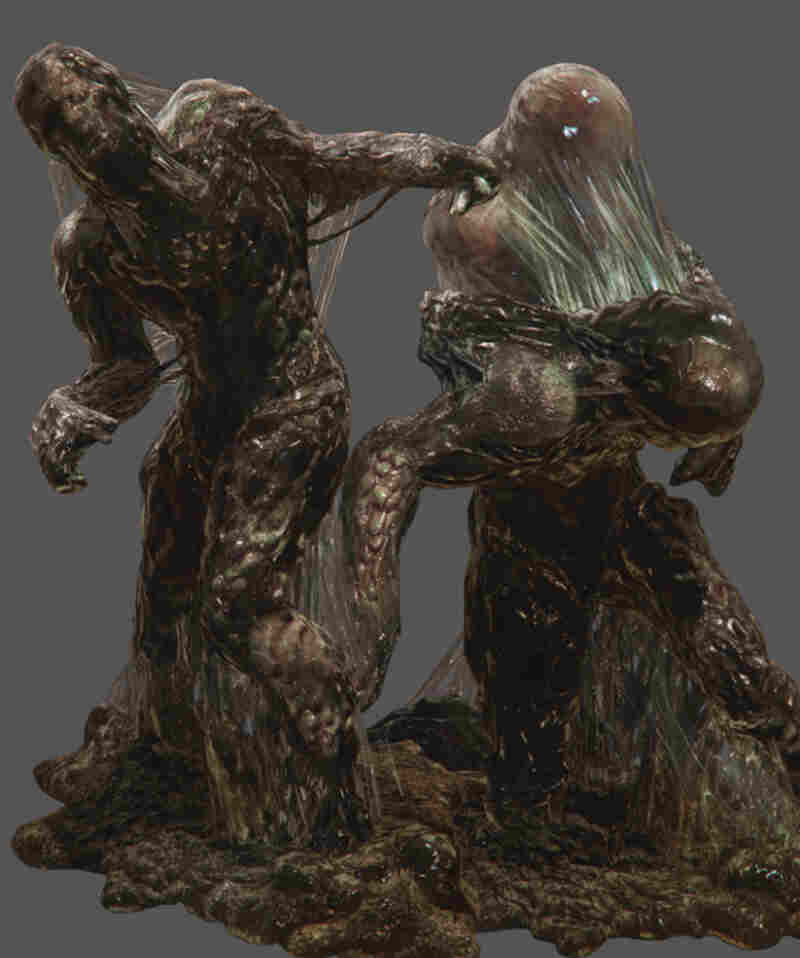The Resident Evil 6 virus is a bit different from its predecessors as well as its successors in the series. Throughout the franchise’s extensive history, we have seen many different strains of viruses at play. From the Progenitor Virus to the Uroboros Virus, Resident Evil has forced us to survive the most terrifying results of these insidious biological weapons. In the following article, we will look at Resident Evil 6’s specific brand of terror and how it compares to the viruses in other Resident Evil games.
The Resident Evil 6 Virus Is Unique
Capcom’s Resident Evil 6 may not have been the most popular game among the fanbase, but is still worth checking out, especially if you’re eagerly anticipating the next entry in the series and want to experience the older titles in preparation. Resident Evil 6 introduces some interesting new gameplay mechanics, a connective multi-thread campaign, and of course, a new virus. The Resident Evil 6 virus has some notable differences and features when compared to the other various viruses in the series.
Enter the Chrysalid Virus, or C-Virus for short. The C-Virus was created by a secret organization known as The Family, who sought to maintain their global influence and power through political meddling and B.O.W. (Bio Organic Weapon) development. The C-Virus was made from a combination of Progenitor, T-Veronica, and G-Virus strains, and was able to preserve the intelligence of its original human host. Carla Radames, the lead scientist in developing the C-Virus, created multiple strains that had the ability to produce more specific mutations. By splicing a chosen individual’s DNA to the C-Virus, The Family could turn other potential B.O.W.s into duplicates, without relying on cloning like the Umbrella Corp did.
Going Viral
The C-Virus has two methods of transmission; either by direct injection into the bloodstream, or via a fog-like form, creating J’avo and zombies, respectively. The virus destroys red blood cells, as well as simultaneously destroys and regenerates tissue, resulting in further mutation. Upon reaching a certain level of mutation, the host becomes enveloped in a chrysalid, which is where the virus gets its name. Humans infected with the C-Virus will violently combust upon their death, due to extremely high body temperature derivation of the T-Veronica virus which gave its victims flammable blood. The host shortly emerges from the chrysalid completely mutated.
The C-Virus possessed many attributes that made it perfect for bioweapon use. It had regenerative properties that allowed the host to regain lost tissue, sometimes sprouting bizarre mutations in the process. As observed in some J’avos, if sustaining a significant arm injury, it can grow a new mutated arm with animal-like traits. The C-Virus’ ability to retain the intelligence of its host meant that the infected could operate vehicles, weapons, and even conduct complex tactical maneuvers. The virus had great utility and adaptability in warfare, but was rendered as non-threatening with the release of the aptly-named “Anti-C” vaccine.
A Medley Of Monsters
Resident Evil 6 contains a decent amount of C-Virus-affected creatures. As well as affecting livestock and other animals such as crows and dogs, the virus’ main target is humans. There’s the J’avo, a basic but not to be underestimated creature that resembles your standard zombie, but with the added bonus of being intelligent enough to fire a weapon and operate heavy machinery. We have the Lepotica, a horrifying, walking sack-like creature that can release the C-Virus as a highly infectious gaseous form, and more obscure B.O.W. s like the snake-like iluzija that has the ability to conceal itself in its surroundings like a chameleon.
While giving us a wide variety of creatures to deal with, the Resident Evil 6 virus also provided us no shortage of inspired bosses to take down as well. We had the Tyrant T-002, Ustanak, who was an answer to earlier games’ Nemesis, the water-dwelling Brzak, and the gigantic Haos. While these monsters may not have been iconic as other ones in the series, Capcom at least kept things creative with their approach to creature design, using the bizarre mutations offered by the C-Virus to give birth to an interesting mix of diverse yet noticeably similar B.O.W.s.
A New Strain
Although the Resident Evil 6 virus was technically a new strain, it had some similarities to the viruses that came before it. As mentioned earlier in the article, the C-Virus shares RNA with the Progenitor, T-Veronica, and G-Virus strains. Despite this, the C-Virus has abilities the others don’t, like the specific stages of mutation and the chrysalid that forms around a heavily mutated host. So while retaining a few of the previous virus’ traits, the C-Virus still stands out as a whole new beast.
The Resident Evil series has traditionally introduced a new strain into the series on a regular basis. Resident Evil 7 shook up the formula with the Mold, which was technically not a virus, but a fungus, whereas Resident Evil Village expanded upon that concept. Both of these games continued Capcom’s legacy of creating a new catalyst for the obligatory outbreak. With a new Resident Evil game on the horizon, we can’t help but speculate on what biological horror will be unleashed upon the world next.
For More Great Content
Total Apex is an all-encompassing content producer. We provide heavily detailed articles every day on entertainment, gaming, sports, and so much more! Check out all our great sports content at Total Apex Sports. Check us out on X @TotalApexEandG and our other sites: Total Apex Sports Bets and Total Apex Fantasy Sports.



